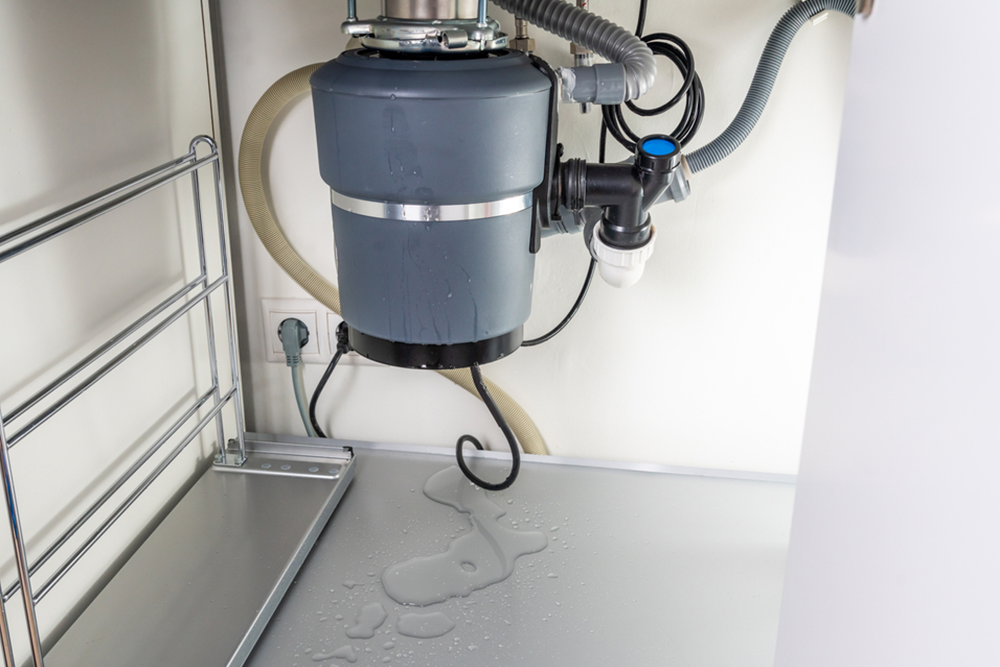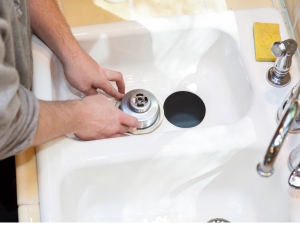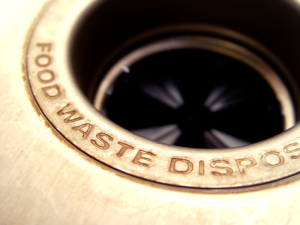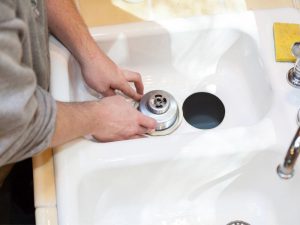It’s an unfortunate truth. Garbage disposals leak, and in most cases it’s from the bottom.
The bad news? If you’re reading this, it’s because your appliance is acting up and leaving you with unpleasant leaks and stains. The good news? There are solutions. This article goes through everything you need to know about leaky garbage disposals.
Whether you want reasons for this flaw or are seeking out a DIY solution to tide you over until a plumber can arrive, there are answers here.
Why Is My Garbage Disposal Leaking from the Bottom?
If you struggle with garbage disposal leaks, the first thing to do is run a diagnostic. The purpose of the appliance is to deal with extra food scraps that won’t necessarily compost well or to eliminate larger bits before running a dishwasher. That means the garbage disposal continually undergoes stress from fibrous materials.
Fats. Proteins. Cellulose. All of that adds up, and it can lead to leaks without proper maintenance. If there’s a leak, it means that something worked its way through the interior and exterior. The way you use the disposal, along with the position of the damage, informs the solutions that you have available.
What Are Common Reasons for Leaking Garbage Disposal Units?
There’s no shortage of opportunities for a garbage disposal to act out, but some are certainly more common than others. By understanding the underlying cause of the leaks, you can not only address it, but prevent it from happening again.
The following represent the most common reasons why your garbage disposal is leaking from the bottom, along with handy solutions:
Damaged or Loose Bolts
The bolts are the pieces that hold your garbage disposal in a fixed position. Consider the racket it makes when you turn on the unit. It shakes the bolts every time you use it, so if you can hear this noise, it’s a good indicator that the bolts are your culprit. A proper wrench to tighten loose bolts can fix this quickly, but make sure the bolts are in sufficient condition to tighten them. An inexpensive item, new bolts can easily prevent a recurrence.
Clogs in the Drain Line
Consider the sheer volume of matter that the garburator swallows regularly. All those bits of plant and animal matter, chemicals, and particulates add up. The issue with clogs is pernicious, taking residence in the piping and waiting.
Slowly tacking on bits and bobs with each use eventually leads to a leak because of the weight at the base. Gravity is the enemy when it comes to clog-induced leaks. To address it, plungers or drain snakes can work.
Issues with the Float Switch
The float switch is the component that controls the activity of the disposal based on the height of water levels. Similar to the switch in a toilet, it tells the disposal to shut down when levels get too high. If you suspect this is an issue, turn off the electricity, remove the top, and look for the float.
Check if it can move freely. If not, then you likely need a replacement. Consider safety when dealing with your disposal. A professional consultation can help you avoid the risk of damage.
Damage to the Impeller
If your trash disposal is leaking from the bottom, it could be related to the impeller. An impeller is a motor that rotates, connecting to the blades that grind the food waste. When there’s damage to the impeller, it can cause a disposal leak. This is an issue that involves interacting with the most dangerous aspects of the appliance. Consider reaching out to a professional to ensure safety and get the job done more efficiently.
Damage to the Gasket
The expression, “Don’t blow a gasket,” holds up when it comes to garbage disposals. These are the rubber or polymer rings that are the first line of defense between liquid on the interior and a leak. Because of elasticity, it means that these parts can suffer some serious wear and tear. It requires removing parts of the unit and can surely benefit from the hands of a trained professional to avoid issues and speed up the task.
General Corrosion
No matter how great the pipe, the plumber, or how clean the items going down the drink are, eventually corrosion takes effect in one form or another. It can affect anything from the blades to the construct of a clog. The best solution is to play defensive and address the leak as soon as possible, reducing the number of parts and working hours the fix requires.
While DIY is a handy way to approach many things, if a unit is under warranty, a professional hand is crucial. It tells the manufacturer that the only people interacting with the unit are trained professionals. This means that, if you need to make a claim later on, you can prove that there was no interference with the unit. A garbage disposal leaking from the bottom isn’t good, and you can stop the situation from getting worse by consulting the pros.
What Causes a Garbage Disposal to Leak From the Bottom?
The true cause of garbage disposal damage is general use. It’s only natural for it to undergo some wear and tear as it fleshes through remains from the kitchen. Routine maintenance can help prevent the inevitable, but over time, things break.
As long as you stay on top of the condition of your garbage disposal–and reach out to a professional when there’s an issue–it’s usually an easy fix.
Among the main causes are:
- Bolt corrosion
- Fats gathering in the drain line
- Particulate getting trapped
- Float switch damage
- Impeller motor problems
- Gasket issues
In each of these cases, whether it’s a mechanical or physical problem, the result is a leak at the base of a garbage disposal. Diagnosing the issue early on helps, and it never hurts to ask a professional about the issue.
Get Professional Solutions to Leaking Garbage Disposal Units
Plumbing isn’t like technical support. You can’t unplug it and plug it back in.
That’s especially true if your garbage disposal is leaking from the bottom. The best way to address a plumbing issue is to reach out to the experts.
The Clover Contracting team is here to help you identify the issue, fix it, and provide solutions to prevent the issue from recurring.
If you’re asking, “What causes a garbage disposal to leak from the bottom?”, the best option is consulting the pros.
As with any appliance, the sooner you act, the easier the solution, so contact a pro today.




